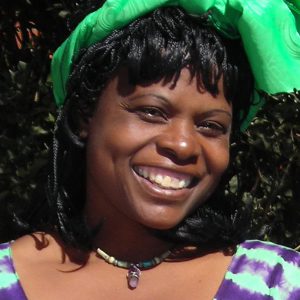Introduction
Irene Chigamba is an immensely talented mbira player, singer, drummer and dancer. Growing up in a musical family, she performed at traditional ceremonies with her parents from an early age. She toured the world with the Zimbabwe National Dance Company from the age of 19, and later continued to tour with groups she directed, as well as performed with.
Recordings Available From MBIRA
Listen to samples of Irene Chigamba’s many albums.
Videos
Biography
(written by Jennifer Kyker based on a 2017 interview, edited by Erica Azim)
Musical Family
Irene Chigamba is the oldest child in a large family of musicians and dancers. She first started playing mbira when she was eight years old. Growing up, Irene spent most of her time in the Zororo neighborhood of Highfield, a high-density suburb on the outskirts of Zimbabwe’s capital city of Harare.
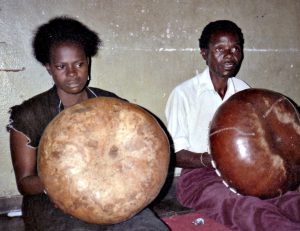
Irene’s mother, Ambuya Laiza Muchenje, and her father, Sekuru Tute Chigamba, both began playing mbira at roughly the same time, in the mid-1960s. In comparison to other early female mbira musicians such as Stella Chiweshe and Beauler Dyoko, Irene points out that her mother’s legacy has remained unrecognized, partly because she never had the opportunity to record. Yet Irene recalls her mother as a very strong musician who often played throughout the night during bira ceremonies.
Learning Mbira
From watching her mother and father perform, Irene developed a strong interest in learning the instrument at a young age. Soon, she began playing hosho (rattles) for her parents, both at home and in bira ceremonies. As a hosho player, Irene was able to observe her parents closely as they played mbira. She also remembers watching carefully whenever her mother played mbira at home.
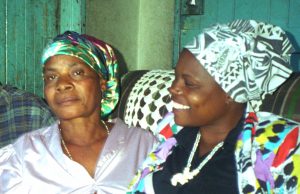
Like many other mbira players, Irene began by teaching herself to play mbira in secret, beginning with the familiar songs “Nhema musasa” and “Mahororo.” Whenever her parents were out, she would take her mother’s mbira, and begin working out the kushaura parts to these songs on her own.
Irene describes her parents as “very happy” when they learned that she had begun teaching herself to play. Recognizing her talent, they began to show her other songs, and gave her permission to play her mother’s mbira, until her father made her an instrument of her own. Her parents’ encouragement and support were critical in enabling Irene to withstand the scrutiny of her neighbors, who were so surprised to see a young girl playing mbira that they would often peer through the windows of her family’s home, exclaiming “Ah! There is a girl playing mbira!”

Irene began playing with her parents at bira ceremonies when she was fifteen years old. During Zimbabwe’s liberation struggle, she recalls performing at bira ceremonies held throughout the country in support of the liberation war.
Performing Internationally
Shortly after Zimbabwe’s independence in 1980, Irene travelled to Mozambique to perform with Ephat Mujuru’s group Spirit of the People during a week-long celebration of Mozambique’s political solidarity with Zimbabwe during the nation’s liberation struggle. Looking for another female dancer to fill out his group, Ephat was referred to Irene by one of her neighbors in Highfield, where she was renowned as a talented mbira musician, singer, and dancer.
Irene auditioned for Ephat’s group at the historic Stodart Hall, located in the nearby high-density township of Mbare. As she recalls, Ephat was impressed by her ability to dance while playing hosho, as well as her mbira playing. The very next day, he arranged for Irene to obtain a passport, and advanced part of her earnings so that she could prepare for her departure. With this money, Irene was able to purchase new clothes for her mother, her father, and herself, as well as groceries for the family.
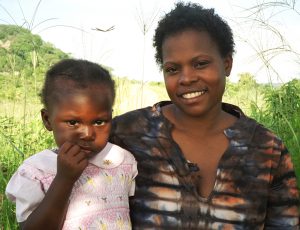
During the solidarity celebration in Mozambique, Irene delivered a particularly spectacular performance by lying down and shimmying the length of the stage on her back, all while playing hosho. The next morning, she woke up to see pictures of herself all over the Mozambican newspapers.
Learning More
Back home in Zimbabwe, Irene’s performance with Spirit of the People also earned her a place in the nation’s newly formed National Dance Company. Only nineteen years old at the time, she now had the opportunity to learn dances from various regions of the country, complementing her knowledge of mbira music. In her spare time, Irene soon began teaching the new dances she was learning to her younger siblings at home, paving the way for the family to form its own dance company. Her earnings also paid the school fees for her younger siblings.
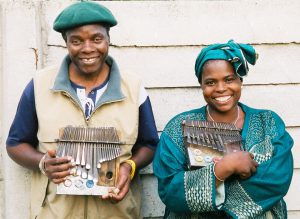
Founding New Performing Groups
In 1990, the National Dance Company was dismantled during Zimbabwe’s entry into an Economic Structural Adjustment Program designed by the World Bank. Building on her work with her younger siblings, Irene founded her family’s first performing group, which she called the Young Zimbabweans. Given the high-level connections Irene had developed during her time with the National Dance Company, the Young Zimbabweans were regularly asked to perform for high-level government events in Zimbabwe. They were also able to start touring abroad almost immediately.
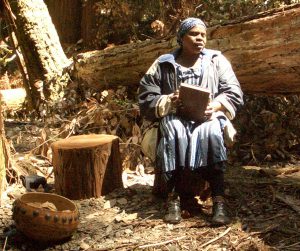
After several original members of the Young Zimbabweans left for permanent employment with the Zimbabwe Republic’s Police Band, Irene trained a new group of performers, and renamed her group Mhembero, or “Celebration.” As the group’s artistic director, Irene has trained several generations of Zimbabwean artists, including members of Zimbabwe’s Air Force Band, as well as a number of artists now living abroad in the US and Canada.
During her time with the National Dance Company, the Young Zimbabweans, and Mhembero, Irene has performed in many countries, including Canada, the United States, Australia, England, Germany, Belgium, Austria, Switzerland, Romania, Russia, Yugoslavia, South Africa, Mozambique, Zambia, Malawi, China, Korea, Japan, and Malaysia.
During the 1999-2006 period, Irene performed and taught in the US several times, both solo and with other Chigamba family members. In 2006, MBIRA brought her to the US to teach Mbira Camps and perform on both the east and west coasts.
Emphasis on Tradition
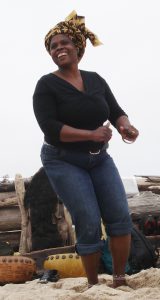
As a mbira player, Irene places special emphasis on the importance of knowing traditional songs such as “Nhema musasa,” “Kariga mombe,” “Nyamaropa,” “Mahororo,” “Taireva,” “Bhuka tiende,” “Chipembere,” and “Kari mugomba.” This is particularly true when playing in ceremonies, as these old songs are the ones preferred by the spirits. As she says, “Those songs are powerful, because they are the ones we mostly use to communicate with our spirits.”
For Irene, one hallmark of a good mbira player, or gwenyambira (professional mbira player approved by the ancestor spirits), is being able to feel which songs might be preferred by particular spirits, for the work of a mbira player lies in calling the spirits to appear. In her words:
“As a gwenyambira, when you are at a bira, you can’t just play for those people who are dancing. You have an objective, you have a mission. So you have to complete that mission…. If you are called to go to a bira, you have to play music that causes the spirit to come out. If you see that the spirit hasn’t come out, then you haven’t done your job well.”
Irene also describes playing in bira ceremonies as the best way to truly develop as a mbira player. As she says:
“You need to get used to playing mbira, to be accustomed to it. Just by playing alone – you learn a song and play a little bit, then put your mbira back down without playing it regularly – you won’t get used to it. So, now, in the bira, that is where you get used to playing mbira. Because when you play for the whole night in the bira, you will be getting accustomed to it, and your thumbs will stop hurting… And once you are used to mbira, it will get inside your body, inside your blood, inside your system, and become a part of you. You will get possessed by the music, to the extent that even when you are sleeping, you will hear the mbira sounding in your dreams.”
Modern Times
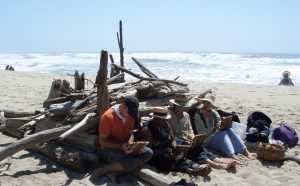
Irene observes that some musicians in Zimbabwe are moving away from the traditional repertory of the mbira in favor of songs such as “Chamutengure,” which was not originally played on the mbira. At the same time, people are changing the way that they play traditional songs such as “Nhema musasa” by introducing new playing styles copied from instruments like the marimba and guitar.
In Irene’s opinion, these changes are detrimental to the mbira, which should be maintained for the benefit of future generations. As she says:
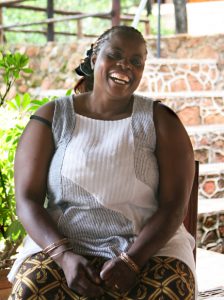
“A person who plays mbira should know that when you play mbira, you aren’t playing only for people’s enjoyment. When you are playing mbira, you are also praying. We take the mbira as an instrument through which to pray. That is how we pray when we are suffering.
The person I am playing for is suffering. It is like a sickness that he has. We take his suffering as our own. So, through playing, I pray for things to get better, for him and for myself….
But now, people are taking the mbira as something that is similar to the guitar. Something with which to earn money, something with which to do whatever you want. That is the difference that has now arisen. Young people who are playing are not playing for the spirits. Most of them have never played in a bira, and some of them have no idea what a bira even is. If that is the case, you cannot be a gwenyambira.”
When a Gwenyambira Meets Another Gwenyambira
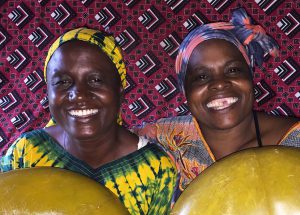
For Irene, knowledge of the mbira’s traditional repertory should enable a gwenyambira to play with any other mbira player he or she meets, even someone he or she has never played with before. As an example, she cites her 2017 album with Patience Chaitezvi Munjeri, which was recorded by Erica Azim for MBIRA in early 2017. Irene and Patience had previously met on several occasions, and had occasionally played a song or two together, mostly during meetings and workshops held by MBIRA. Yet this recording was the first time that they sat down to play mbira together for any extended time.
Because they are both are accomplished players in the traditional style, however, the two women were able to simply sit down and play together, resulting in a moving recording. As Irene says, “I can play with anyone, just as long as he or she is a gwenyambira.”
